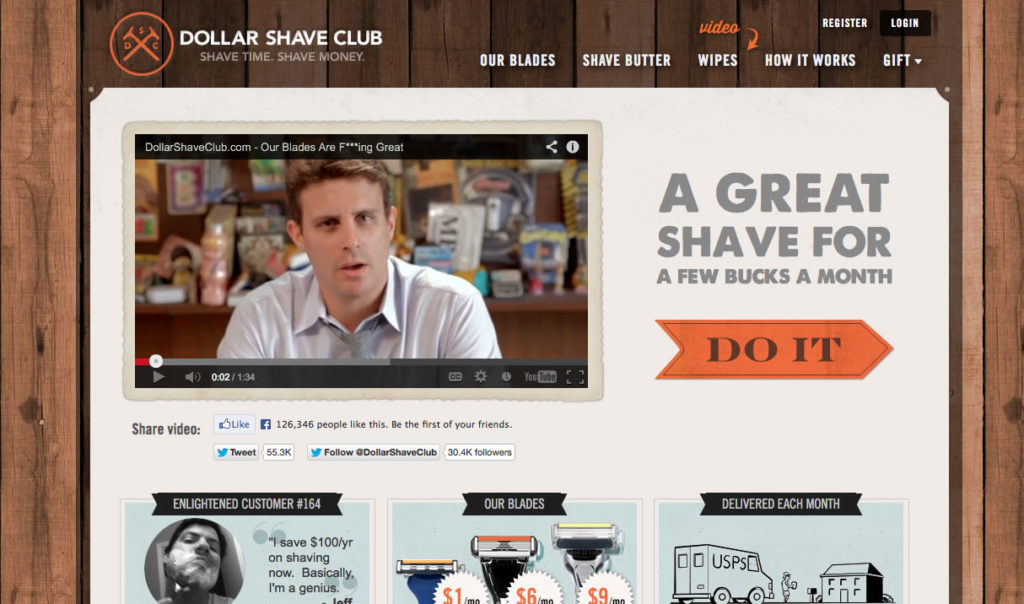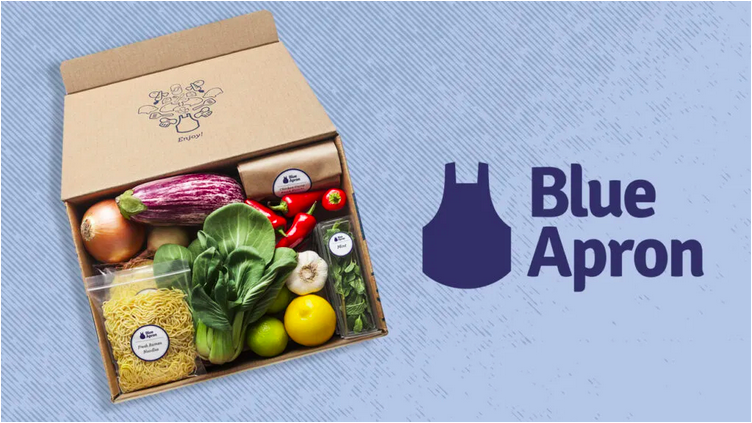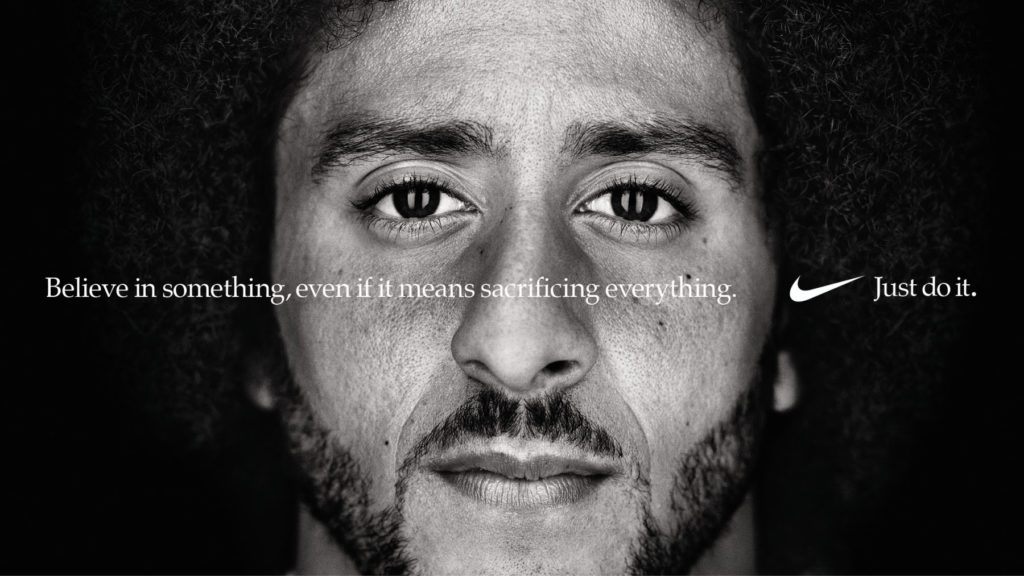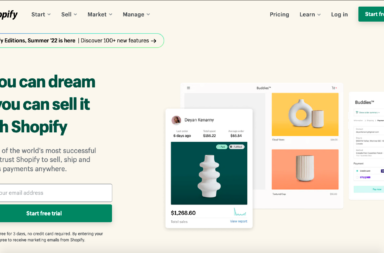Every business has unique requirements, but it doesn’t mean you have to invent new ways to fulfill the unique needs of your business. When you are an e-commerce business, you can take other e-commerce businesses as a reference to nurture your business.
Marketing is one of the major concerns of e-commerce businesses to promote the brand and grow sales.
Here are some of the best e-commerce marketing campaigns from popular brands that you can consider for your eCommerce business marketing.
1. Dollar Shave Club: Our Blades Are F***ing Great
The most effective e-commerce marketing campaigns don’t rely on tricks; instead, they concentrate on excellent content. You want something that promotes value, makes your brand stand out and makes customers think about your product differently.
Dollar Shave Club outperforms the competition on all of these fronts, thanks to hilarious and amazingly viral video campaigns that got men talking about razors.

The most well-known example is Dollar Shave Club’s initial commercial, “Our Blades Are F***ing Great,” in which the company’s creator argues for $1 razor blades while touring a bizarre workplace. The fundamental product is always presented in the best possible light; the candid approach is simply a strategy to attract your attention, while the commercial is fully tongue-in-cheek.
Dollar Shave Club received 12,000 conversions in two days as a result of this promotion. Meanwhile, the video’s popularity continues to grow, with over 27 million views on YouTube alone. Startup marketers may learn a lot from Dollar Shave Club’s success in providing entertaining and informative content.
Dollar Shave Club’s ad on YouTube
2. Blue Apron: Referral Marketing Campaign
Blue Apron is another excellent example of an e-commerce marketing campaign that you can utilize to get ideas for your own. This meal kit service launched a referral scheme in order to gain more users.
Blue Apron used email marketing and other techniques to persuade current subscribers to invite their friends to use Blue Apron as part of this referral program. New subscribers would get complimentary meals and delivery, while the referrer would get referral credits toward their subscription.
Along with the main means of referral marketing, the brand used the marketing strategies like display ads and podcasts to get more subscribers.

As a result, their referral program was responsible for 34% of their new client acquisition.
Blue Apron used the strength of its customer base to help them sell its brand and gain new subscriptions. It’s a highly successful approach to generating new leads for your business.
Hence, you shouldn’t be afraid to use the power of your existing subscribers! Your customers can frequently function as your best salesperson with the help of your referral program and user-generated content.
3. Beardbrand: Content Marketing
One of the finest e-commerce marketing initiatives is Beardbrand. Beardbrand focuses on giving good information on its variety of beard, hair, and body products to its audience as a men’s grooming firm.
We’ll use Beardbrand’s content marketing strategy as an example. Their content marketing strategy is critical to their success. Beardbrand is a successful e-commerce business because it creates content that its customers want, such as why or not to grow a beard or why to have a buzz cut.
Beardbrand is an excellent illustration of how content can help you acquire qualified leads and convert them into sales. Leads are more likely to choose Beardbrand’s items if you provide them with useful grooming knowledge.
The main takeaway from this is that don’t underestimate the importance of a well-thought-out, industry-specific content strategy! Providing excellent information about your sector to your audience will help you stand out from the competition and generate more sales.
4. Barkbox: No Dog Left Behind
Barkbox is BARK’s monthly subscription service, which includes snacks, toys, and chewies for customers’ fluffy companions. BARK’s marketing is best in class, in addition to developing a good idea and executing it successfully. The company excels at creating attention-getting social media campaigns and masters the art of large-scale customization.
Because dogs, like people, are individuals, personalization is critical for a service like Barbox. There are over 120,000 breed and size variations alone, not to include allergies and temperaments. Because of this variability, sending the proper goods to the right dog can be difficult, such as an extremely sturdy chew toy for an aggressive puppy.
To that purpose, BARK created the “No Dog Left Behind” initiative, which actively reaches out to clients in order to obtain and verify vital information. This program, according to BARK, communicates with up to one-third of its consumers every month, collecting data points to meet individual requirements.
BARK developed and produced higher-quality chew toys, manufactured snacks with unique ingredients, and more as a result of this. Customers can also share their data with BARK in a way that emphasizes the value it can provide in return.
This strategy increased brand awareness and allowed brands to better serve their customers, resulting in high customer loyalty and referrals.
Key takeaway for you is that you can also create such campaigns to get crucial information from your customers and provide better quality products accordingly.
5. Nike: Dream Crazy
Nike’s “Dream Crazy” campaign, which features footballer Colin Kaepernick, was published in June 2019. This came after his very publicized kneeling during the national anthem to protest racial injustice. The video for the campaign, which is narrated by Kaepernick, is full of inspirational stories of sportsmen who overcame adversity and achieved great success.

While the campaign was contentious since the firm took a political stand, it was plainly successful: Nike gained 170,000 Instagram followers as a result of it, and the YouTube clip had more than 27.4 million views.
That’s not all, though. The Women’s Soccer World Cup began later that month, and Nike leaped at the chance to refresh its “Dream Crazy” campaign with “Dream Further”.
Despite the fact that Nike is not an official sponsor of the competition, it contributed to the discussion by spotlighting prominent athletes who will compete in the games.
With a storyline identical to their last campaign, this video traced the path of a young soccer player who aspired to compete in the World Cup and the company’s belief that she would succeed.
6. Aerie: Aerie Real
Emotional marketing is effective because emotions have such a strong influence on our decisions; advertising that tugs at our heartstrings has had a lot of success. This features the “Aerie Real” campaign by American Eagle.
In 2014, American Eagle’s Aerie brand was one of the first to guarantee consumers that in their “Aerie Real” campaign, they would utilize un-photoshopped, un-airbrushed models with the purpose of highlighting real women.
And it paid off: by the end of 2015, sales had increased by 20%. The campaign’s execution and the emotional relationship spectators had to it were the reasons for its success, not just the promise.
Aerie not only used unedited models but also highlighted visible and invisible infirmities and problems that are overlooked in the fashion industry.
They weren’t finished yet. Using social media to expand their reach, Aerie created the hashtag #AerieREAL to empower and inspire customers to upload images of themselves wearing Aerie clothing. This made their present customers feel supported and also extended the retailer’s reach to women who may not have been aware of them before.
Therefore, the basic idea of this campaign is to connect with the customers emotionally, and you could also try this for your next e-commerce marketing campaign.
7. ASOS: AsSeenOnMe
ASOS is a popular online clothes retailer that made a big statement with its #AsSeenOnMe social media campaign. We all know that celebrity-endorsed products sell well because we enjoy seeing the individuals we admire utilizing products that the ordinary person does. User-generated material, on the other hand, has performed just as well, if not better.
ASOS invited its customers to use the hashtag #AsSeenOnMe to upload photos of their clothing and accessories on Instagram. The hashtag had over a million mentions after that. ASOS launched a dedicated Instagram account for the hashtag because the social media campaign was so successful.
You can try reaching out to your customers with your campaigns to engage with the brand and spread awareness. Social media is a great place to run such marketing campaigns.
With the help of such an amazing e-commerce marketing campaign, you can improve your customer relationship and spread brand awareness to earn new customers.
Key Takeaways
These are some of the top e-commerce marketing campaigns from popular brands that you can consider to take ideas for your e-commerce business marketing campaigns.
All these campaigns performed exceptionally and helped the brand achieve new heights. Analyze which marketing campaign idea is right for you, and start designing your brand’s campaign.
If you aren’t competent with marketing, then you can always consider a digital marketing agency to deliver you fruitful results. Marketing needs expertise, and a marketing agency can give you that expertise to fetch the potential results and ROI.
Good luck, marketers!
Guest Post by Gajendra Singh Rathore
Gajendra Singh Rathore is a digital marketing expert and is associated with a digital marketing agency in Toronto. He is always eager to learn, experiment, and implement. Astronomy is his escape from the outside world.


